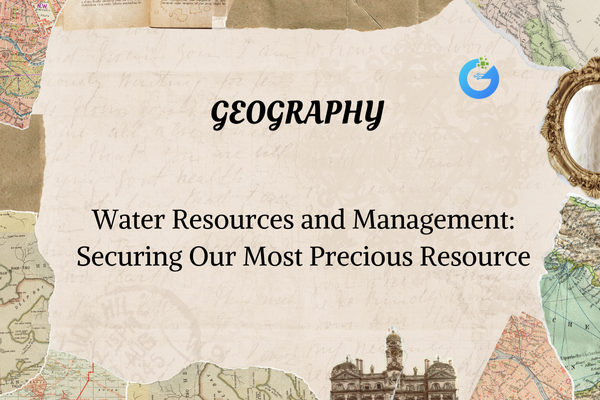Introduction: When Nature Turns Dangerous
Have you ever seen news about a flood sweeping through a town, or an earthquake shaking buildings? These are natural disasters—sudden events caused by nature that can cause great damage to life, property, and the environment.
Natural disasters are unpredictable, and while we cannot stop them, we can understand them better and learn how to reduce their impact.
Let’s explore what natural disasters are, their types, their effects on people and the planet, and how we can stay safe.
expert-led Geography classes – visit our website to learn more
What Are Natural Disasters?
A natural disaster is a sudden natural event that causes destruction to the environment and human life.
They are caused by natural forces like shifting of Earth’s plates, changes in weather, or volcanic activity.
Examples:
- Earthquakes
- Floods
- Cyclones
- Tsunamis
- Droughts
- Landslides
- Volcanoes
- Forest Fires
Types of Natural Disasters
Let’s break them into two main categories:
Geological Disasters (related to Earth’s crust)
| Disaster | Description |
| Earthquake | Shaking of the Earth caused by sudden movement of tectonic plates |
| Volcano | Eruption of hot lava, ash, and gases from inside Earth |
| Tsunami | Huge sea wave caused by an undersea earthquake |
| Landslide | Sudden sliding of land, rocks, and mud down a slope |
Climatic or Weather-Related Disasters
| Disaster | Description |
| Flood | Overflow of water that submerges land |
| Cyclone | Violent rotating storm with strong winds and rain |
| Drought | Long period without rainfall, causing water shortage |
| Forest Fire | Uncontrolled burning of forests, often due to heat or human carelessness |
Causes of Natural Disasters
| Cause | How It Leads to Disasters |
| Tectonic Movements | Causes earthquakes and tsunamis |
| Extreme Weather | Results in cyclones, floods, droughts |
| Human Activities | Deforestation and mining can trigger landslides |
| Climate Change | Increases the frequency and severity of floods, droughts, and storms |
| Global Warming | Melts glaciers, raises sea levels, causes extreme weather |
Impact of Natural Disasters
Natural disasters can be deadly and expensive. Their effects are felt by people, animals, and the environment.
On Human Life
- Death and injuries
- Homelessness
- Loss of family members
- Psychological trauma
On Property and Economy
- Destruction of homes, schools, hospitals
- Loss of crops, livestock, and factories
- Huge repair and rebuilding costs
On Environment
- Deforestation and loss of wildlife
- Pollution of water and air
- Changes in landscapes and ecosystems
Disaster Management and Safety Tips
While we can’t prevent disasters, we can reduce their damage through preparedness and awareness.
At School and Home
- Know emergency exits
- Participate in mock drills
- Keep emergency numbers handy
Emergency Kit Checklist
- First aid box
- Drinking water and dry food
- Flashlight and extra batteries
- Important documents in a waterproof bag
If You’re Caught in a Disaster
| Disaster | What to Do |
| Earthquake | Get under a table or doorway, stay away from windows |
| Flood | Move to higher ground, avoid walking in floodwater |
| Cyclone | Stay indoors, switch off electrical appliances |
| Fire | Cover nose with cloth, crawl low under smoke, exit quickly |
Famous Natural Disasters in India
| Event | Year | Location | Impact |
| Bhuj Earthquake | 2001 | Gujarat | Over 20,000 people died |
| Indian Ocean Tsunami | 2004 | Coastal states | Affected Tamil Nadu, Andhra, Andaman |
| Kedarnath Flood | 2013 | Uttarakhand | Flash floods killed thousands |
| Odisha Super Cyclone | 1999 | Odisha | Wind speeds over 250 km/h |
Core Concepts Table
| Term | Meaning |
| Tectonic Plate | Large pieces of Earth’s crust that move and cause earthquakes |
| Evacuation | Moving people away from danger zones |
| Disaster Management | Steps taken before, during, and after a disaster to reduce harm |
| Mitigation | Actions to reduce the impact of disasters |
| Relief Camp | Temporary shelters for people affected by disasters |
Frequently Asked Questions (FAQs)
Q1. What is a natural disaster?
A natural event that causes sudden harm to life and property.
Q2. What causes earthquakes?
The movement of tectonic plates beneath the Earth’s surface.
Q3. How can we prepare for disasters?
By creating emergency kits, following safety drills, and spreading awareness.
Q4. Name two disasters caused by climate.
Floods and cyclones.
Q5. What is disaster management?
A system to reduce, prepare for, and recover from disasters.
Fun Facts
- Earthquakes cannot be predicted, but their damage can be reduced with better building design.
- The word “tsunami” comes from Japanese, meaning “harbor wave.”
- Cyclones are called “hurricanes” in the USA and “typhoons” in Asia.
- The Sundarbans mangrove forests reduce the impact of cyclones in West Bengal.
Conclusion: Stay Safe, Stay Prepared
Natural disasters are a part of nature, but with the right knowledge and preparation, we can reduce their impact. Understanding them helps us protect not only ourselves but also our communities.
Remember—being aware today can save lives tomorrow. Learn the signs, stay alert, and always be prepared.








